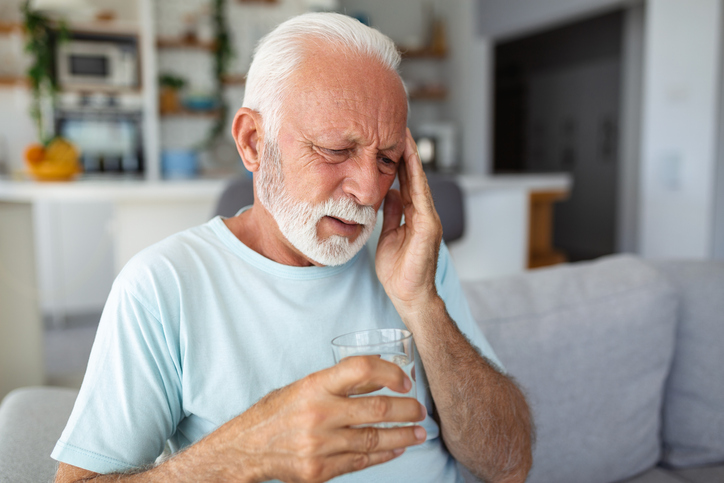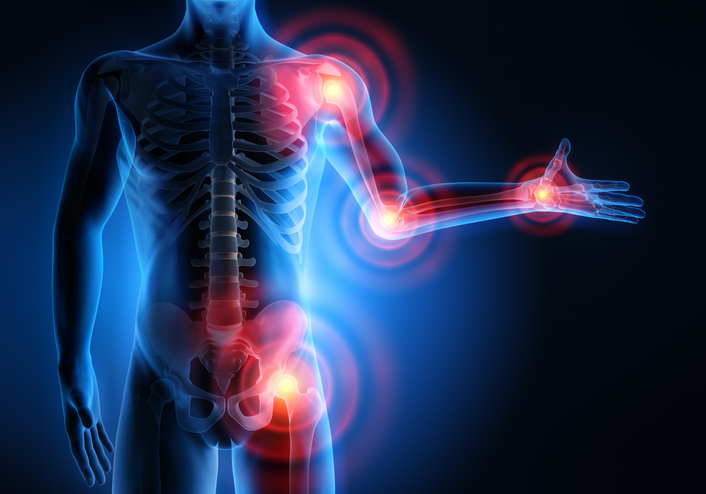
Here are the top stories covered by DocWire News this week in the Rheumatology section. In this edition, read about the health differences between pediatric psoriasis patients and their peers, the safety and efficacy of an etanercept biosimilar, and how knee osteoarthritis patients may benefit from electroacupuncture.
A recent analysis found that pediatric psoriasis patients have higher rates of comorbidities compared to their healthy, age-matched peers. Researchers gathered data spanning Jan. 1, 2009, through June 30, 2015, from the MarketScan Commercial Claims and Encounters Database on patients aged between four and 17 years. Nonpsoriasis patients (n = 30,744) were matched based on age, sex, and index month and year 3:1 to psoriasis patients (n = 7,686). The mean age at the index date was 12.9 years in both cohorts, and both groups were 56.4% female. The majority of psoriasis patients received their diagnosis from a dermatologist (65.4%). Prevalence per 1,000 patients for any comorbidity was significantly higher among young psoriasis patients (49.05) than their healthy peers (11.94). The prevalence of specific comorbidities varied between the groups: the most prevalent comorbidities for psoriasis patients were Crohn’s disease (11.19) and psoriatic arthritis (11.19), and for nonpsoriasis patients were diabetes mellitus (4.46) and serious infections (2.99). Overall prevalence of psychiatric comorbidities was also greater among psoriasis patients (22.64) than patients without psoriasis (13.40). Specifically, psoriasis patients had higher prevalence than nonpsoriasis patients of bipolar disorder (4.94 vs. 2.60), anxiety (4.55] vs. 1.76), suicidal ideation (2.34 vs. 1.63), and substance abuse (0.78 vs. 0.26).
Results from the EQUIRA trial found that rheumatoid arthritis patients taking etanercept (ETN) did not have different outcomes in terms of safety or efficacy when switching to biosimilar sandoz etanercept (SDZ ETN). RA patients aged ≥ 18 years were included in the study; those with previous ETN exposure were excluded. Patients were randomized 1:1 to 50 mg once a week of SDZ ETN or ETN for 24 weeks; after 24 weeks, ETN patients were switched to SDZ ETN for the remaining 24 weeks. The primary outcome was 24-week change in DAS28-CRP; secondary outcomes included patients who achieved good and moderate EULAR response per DAS28-ESR, patients who achieved improved ACR20/50/70 response rates, health assessment questionnaire (HAQ) disability index score and patients who achieved HAQ index in normal range, and Functional Assessment of Chronic Illness Therapy fatigue scale outcomes at 24 and 48 weeks. At 48 weeks, changes in DAS28-CRP and proportion of patients achieving good and moderate EULAR responses were similar between both groups. All other measured outcomes were also similar between the two groups. There were no significant differences in safety or efficacy.
High-intensity electroacupuncture (EA) could be beneficial for patients with knee osteoarthritis (KOA) who suffer from chronic pain. According to the researchers of a recently published randomized controlled trial, it reduces pain by increasing conditioned pain modulation (CPM). KOA patients aged ≥ 50 years were randomized 2:1:1 to receive strong EA (n = 145), weak EA (n = 72), or sham EA (n = 75), undergoing 10 30-minute acupuncture sessions for two weeks. The primary outcomes were visual analog scale (VAS) for pain (scores ranged from 0 [no pain] to 10 [pain as bad as it could be]), CPM value, and Chinese translations of the Western Ontario and McMaster Universities Osteoarthritis Index (WOMAC). The strong EA group had the most significant change in mean CPM function score from baseline to week two, increasing from 9.49 to 24.34—compared to 9.86 to 14.61 in the weak EA group and 9.46 to 10.89 in the sham EA group. The strong EA and weak EA groups had significantly better VAS and WOMAC outcomes compared to the sham EA group, and the strong EA group outperformed the weak EA group.







 © 2025 Mashup Media, LLC, a Formedics Property. All Rights Reserved.
© 2025 Mashup Media, LLC, a Formedics Property. All Rights Reserved.